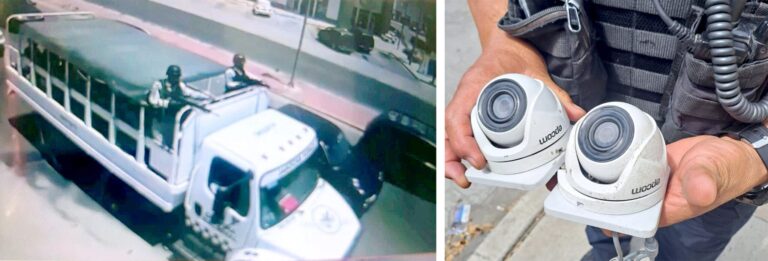Mexican Cartels Establish Surveillance Centers Along U.S. Border
Cartels operating in Mexican border cities have set up their own “intelligence centers” equipped with cameras, communications, and basic dispatch offices to send gathered information. Criminal organizations like the Sinaloa and Jalisco New Generation cartels have established these “intelligence bunkers” to closely monitor authorities, citizens, and rivals along the U.S.-Mexico border, according to Mexican officials and cartel members who spoke with Fox News Digital.
Illegal Cameras Uncovered in Tecate
In July, authorities in Tecate, Baja California, discovered over a dozen “illegal security cameras” scattered around the city, allegedly owned by the Sinaloa cartel. Tecate’s chief of police, Leopoldo Tizoc Durán, stated, “After an investigation, we found these cameras didn’t belong to any of the city or state security forces and decided to remove them in an attempt to combat the criminal organizations operating here.”
Monthly Rent for Surveillance in Tijuana
In Tijuana, cartels pay homeowners and business owners monthly rent to install security cameras on their properties. An anonymous Sinaloa cartel operative revealed, “We pay from 500 pesos to 1,000 ($25 to $50) for installing a couple of cameras around their property.” The images captured by these cameras are sent to a safe house, where reports are generated.
Intelligence via WhatsApp
Cartel members share screenshots and video clips via WhatsApp in private groups. These images and videos provide information about rival cartels or police forces entering a city or neighborhood. The operative explained, “This is also how we find people easily around a city. When someone owes us money or a rival is hiding, it doesn’t take too long for his face or vehicle to pop up on one of these cameras.”
Challenges for Authorities
Authorities in border states like Baja California and Sonora are seizing illegally installed security cameras primarily on the main highways of border cities. However, cameras on private properties continue to operate. These cameras draw power from city streets’ electric lines and are connected to the internet. Removing them requires a court order.
Additional Sources of Information
Cartels also gather information from hundreds of lookouts situated at city entrances or in the mountains. These “halcones” (hawks) report on vehicles, license plates, and unusual visitors. Drones are used for surveillance along the border, monitoring activities like Border Patrol shifts and migrant movements.
Dispatch Centers for Quick Action
In cities like Tijuana and Ciudad Juárez, local cartels have makeshift “dispatch centers” from which operators can call for backup during confrontations or order attacks against rivals or police. Cartel members have meticulously mapped out the city by sectors and stationed hitmen in each sector for quick responses.
Sophistication of Cartels Overwhelming Authorities
Despite Mexican authorities’ efforts to combat cartels, the criminal organizations continue to outsmart security forces. The use of security cameras is just one example of how cartels in Mexico are leveraging technology to commit crimes.
Note: This article is presented without an author’s byline.

